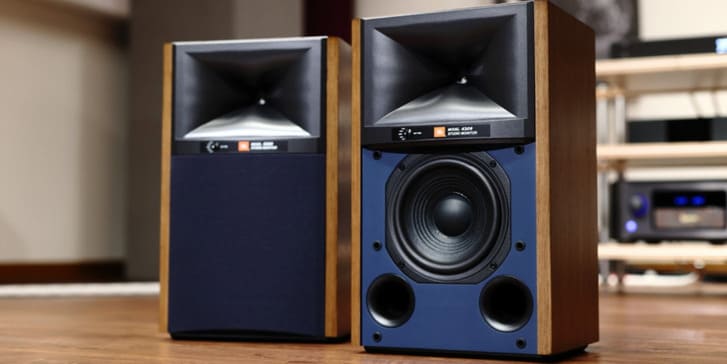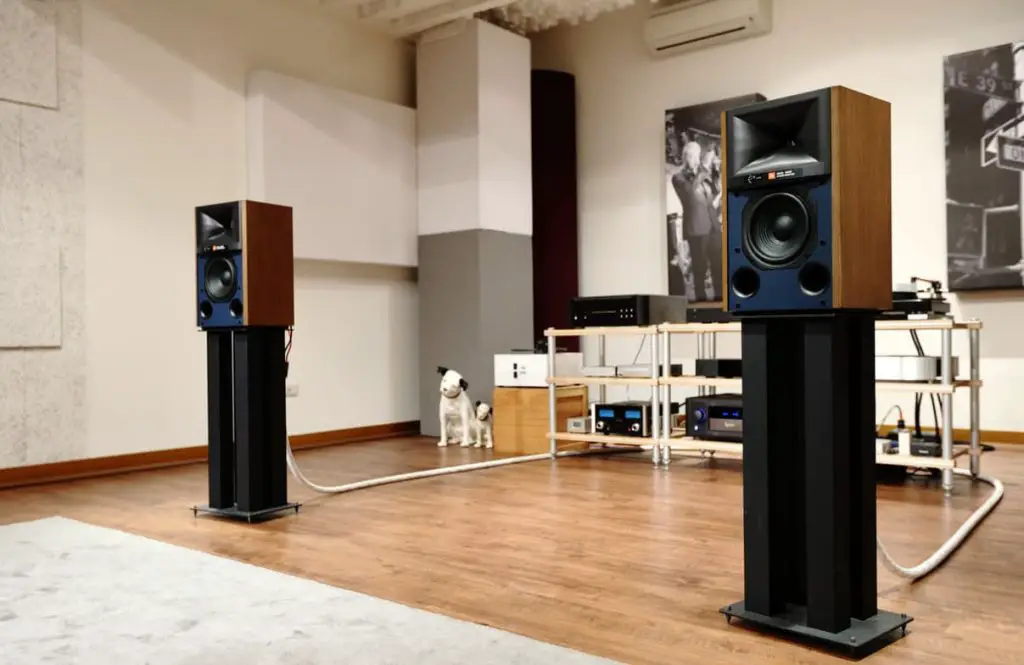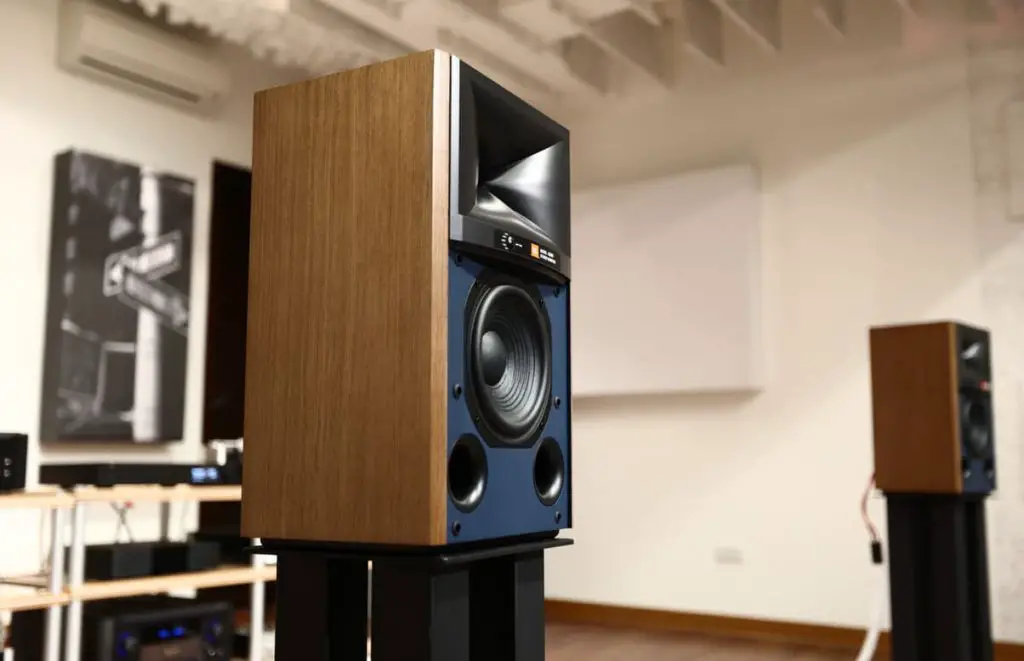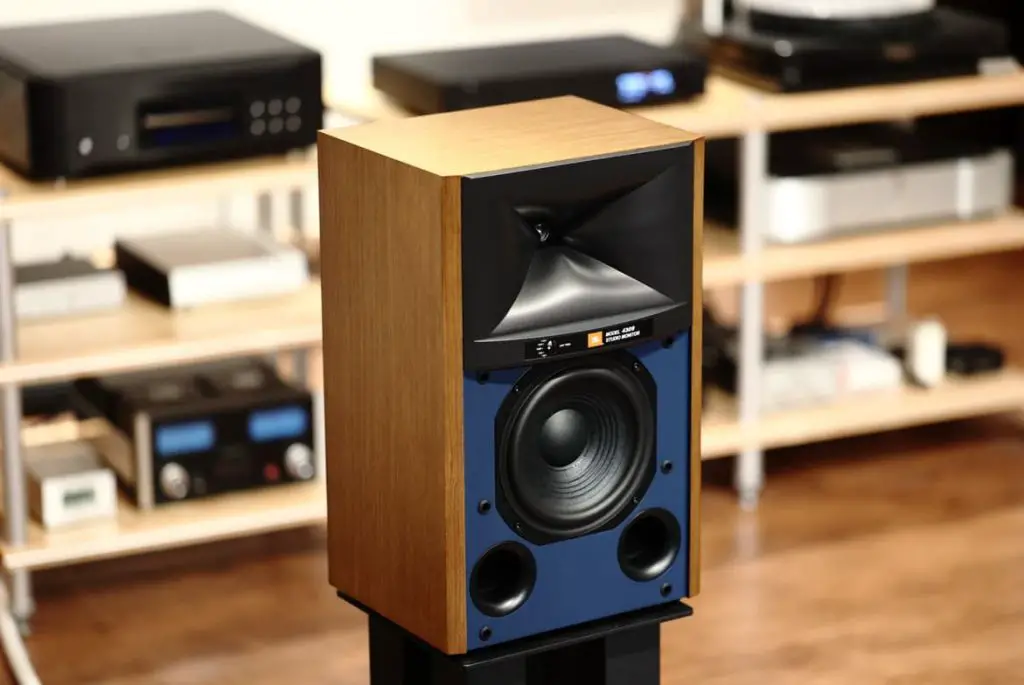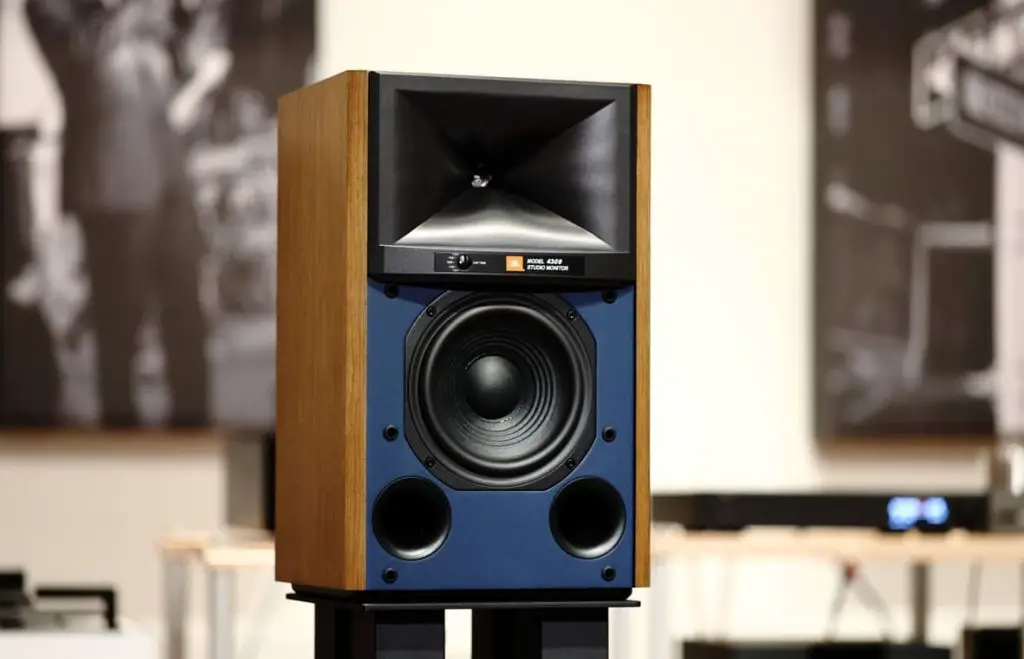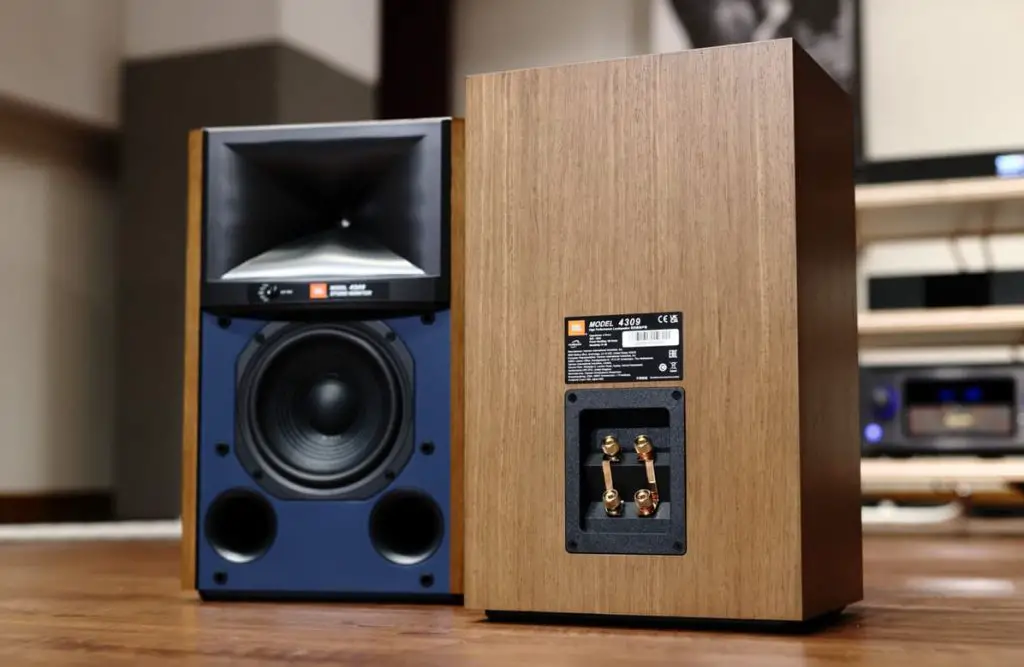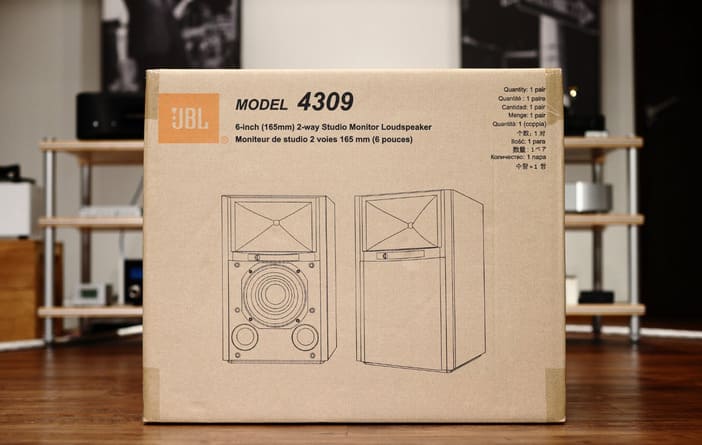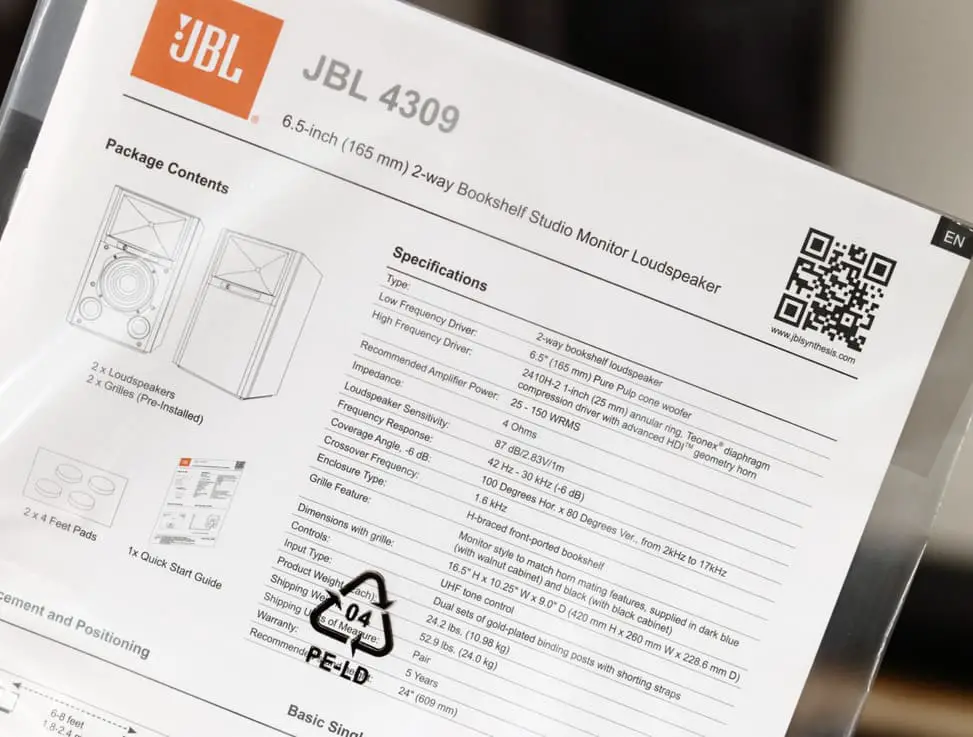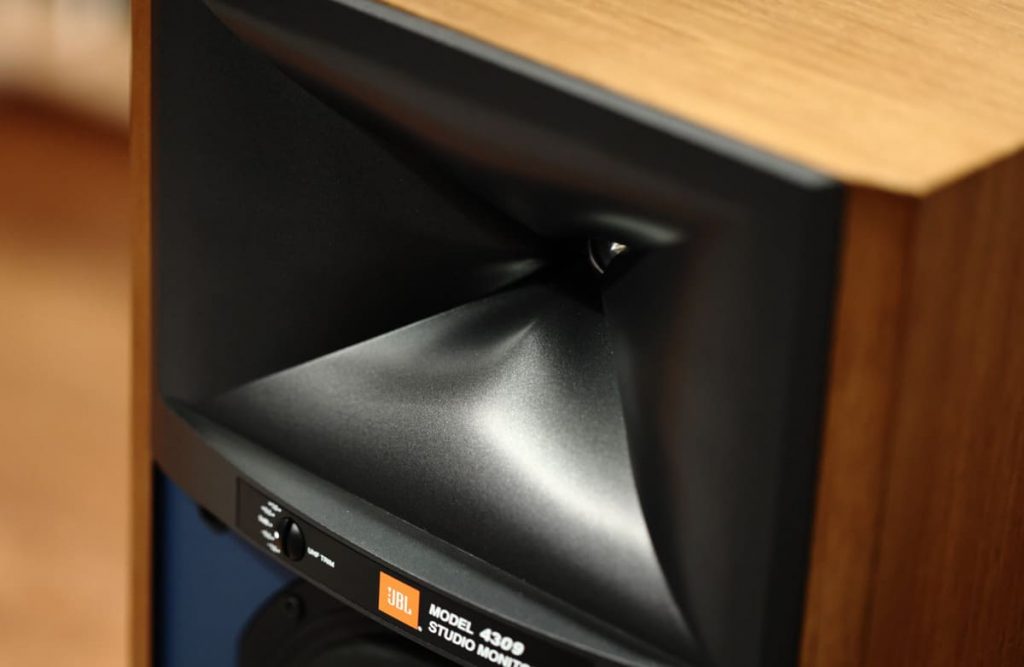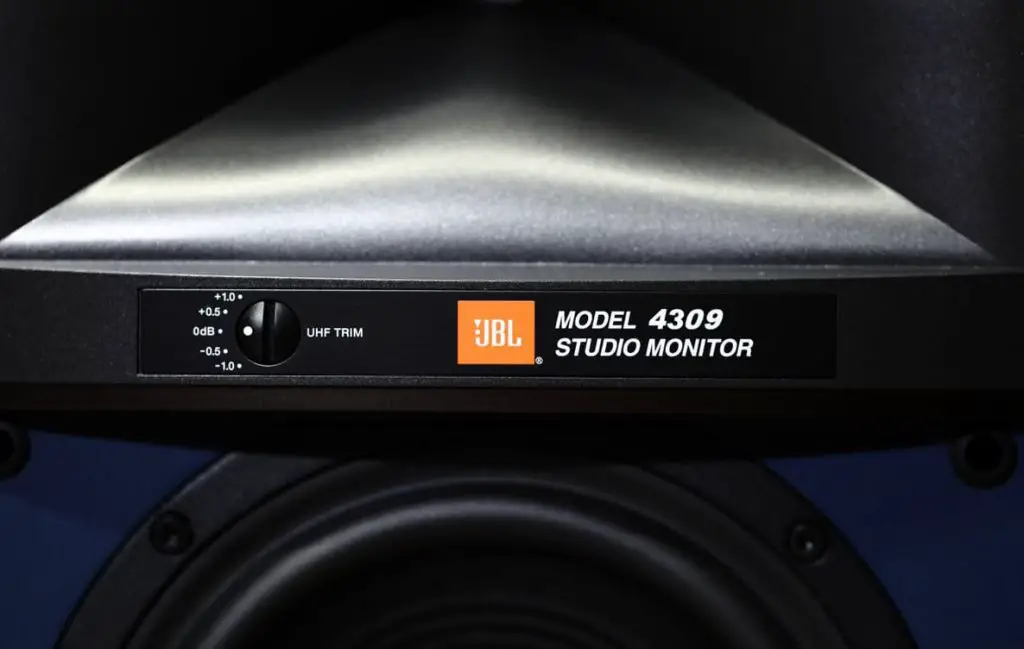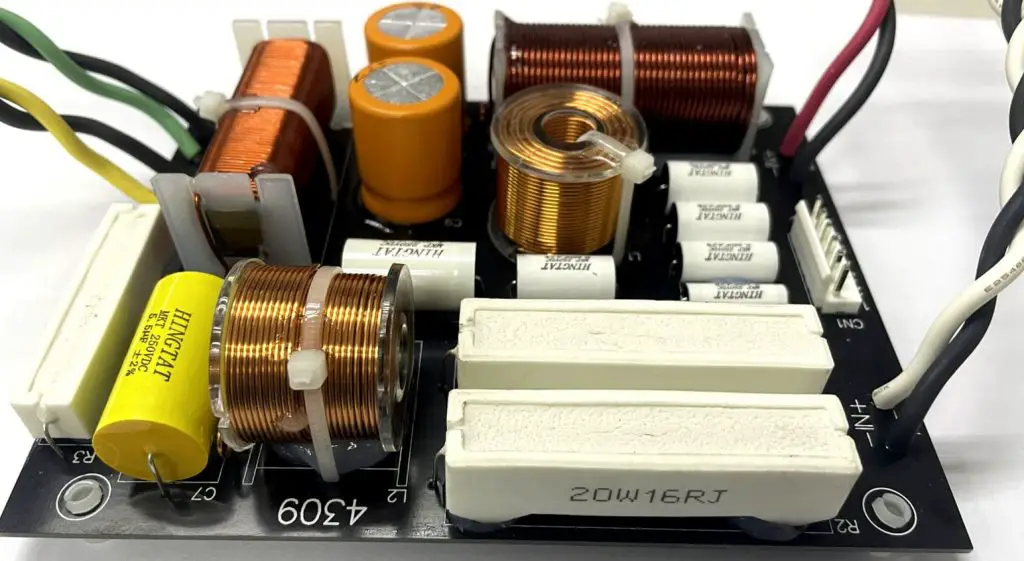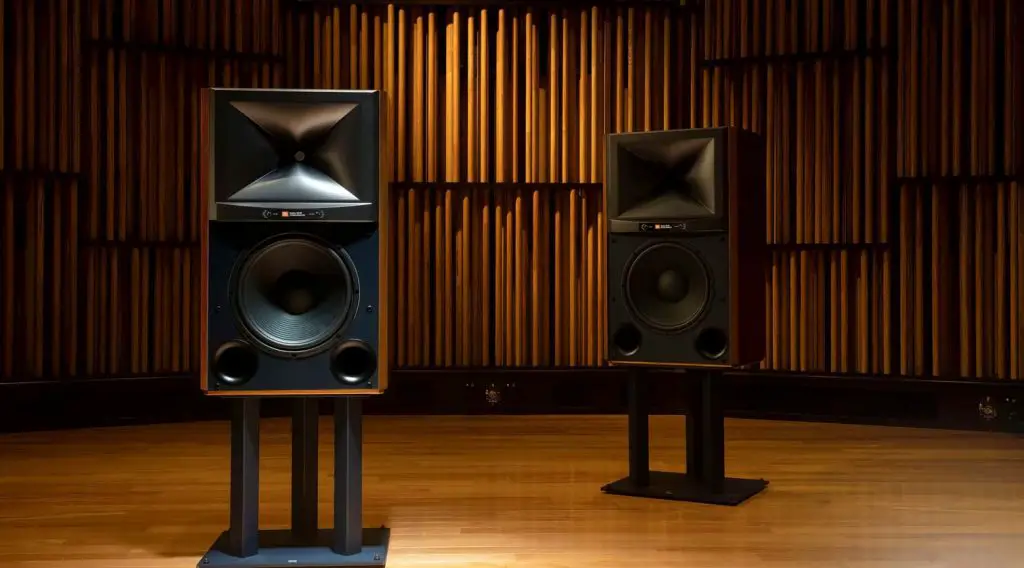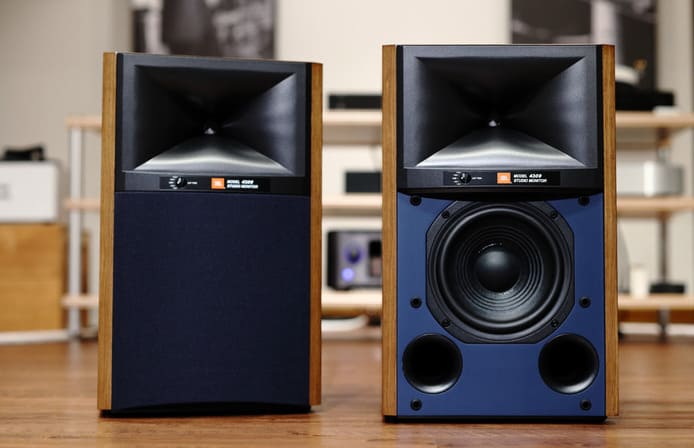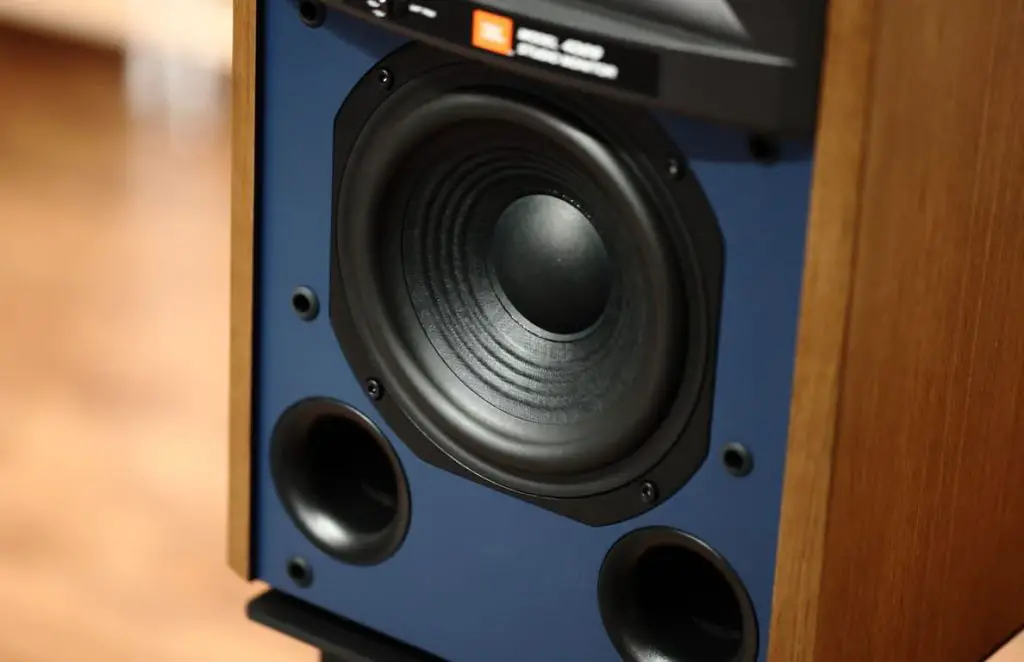JBL 4309 Bookshelf Studio Monitor Review
I can almost say that every audiophile has a story related to JBL. JBL’s position in the audio industry is just too important. Whether it is for the older generation of seasoned audiophiles or the new generation of young audiophiles, or even friends who are not audiophiles but just love music, they have all come into contact with JBL products.
JBL products have a very wide range, including the home market, the professional market, Bluetooth speakers, headphones, concerts, and so on. The protagonist of this review, the JBL 4309 bookshelf studio monitor speaker, is also the latest and smallest member of the Studio Monitor series.
The History
JBL is the abbreviation of brand founder James B. Lansing, who was born in Illinois in 1902. In 1927, he founded the Lansing Manufacturing Company in Los Angeles, and in 1941 it was acquired by the Altec Service Company. In 1946, he left Altec and founded James B. Lansing Sound Inc.
After that, JBL was led by Mr. William Thomas, and the company continued to develop in various fields, with many products remaining sacred classics in the minds of audiophiles to this day.
In 1962, due to a fatal accident involving rival Altec, JBL began developing and producing professional monitor speakers (Studio Monitors) due to market demand. The C50SM was born and was adopted by numerous record companies such as Capitol Records, CBS Columbia, Verve, MGM, RCA-Victor, and more.
In 1968, JBL made two important developments in monitor speakers. One was the modification of the D50S7SM into the 4320, including the use of a new crossover, better and more balanced frequency response, and greater power handling capability.
The other was the birth of the legendary and classic 4310, which not only had a significant impact on the monitor speaker market but also on the home market, which was something JBL had not anticipated. The 4310, with its advantage of smaller size, successfully sold to some recording studios and venues that were unable to use the Altec 604.
It’s worth noting that the 4320 and 4310 were not initially named with four digits. The 4320 was originally called the D50, and the 4310 was simply called the JBL Control Monitor until the 1970s when JBL’s monitor speakers began to be named with four digits.
Despite the success of the 4300 series, JBL was threatened by UREI monitor speakers in the 1980s. While the multi-driver design of the 4300 series had high output and wide bandwidth, it was weaker in terms of time phase and sound field coherence and harmony between different drivers compared to the UREI 811 and UREI 813, which were modified from the Altec 604.
In order to compete with its rival, JBL returned to a two-way design, which had better time phase consistency than the 4300 series, while retaining the high output and wide bandwidth of the 4300 series.
The 4430 and 4435 were born, using JBL’s new Bi-Radial Horn technology, and in 1983 the smaller 4425 was born. Around the same time, in 1982, the 4312 was released, which continued the 4310 and 4311 and incorporated the better design concepts that JBL had accumulated over the years.
The 4312 was not only popular in the recording market, but also a legend in the home market, especially in Japan. Afterward, the 4312 was continually improved and new models were released, the latest of which was the 4312G, released in 2019, and there is also a smaller version, the 4312M.
There are, of course, many more wonderful stories about JBL, and books or information about the company easily exceed hundreds of pages.
The main subject of this review is the JBL 4309 bookshelf speaker, which was released in 2021 and is the latest member of the JBL 4300 series. It is currently the smallest size in the JBL Studio Monitor monitor speaker series, with the 4312G, 4349, and even the 4367 all being considered medium to large-size speakers. The 4309 desktop speaker has been around for over 50 years, more than half a century, since the release of the 4310 in 1968.
The Design
Upon opening the box, You can see the appearance of a wooden body with a deep blue cover. It gives off a low-key and luxurious feeling at first glance. After removing the cover, a brighter blue appearance is revealed, with a black single unit wrapped in the center.
This is in stark contrast to the low-key feeling I just experienced and gives off a slightly fashionable and lively appearance instead. It satisfies both subtle and outgoing appearance needs and is also quite pleasing to the eye.
The JBL 4309 bookshelf speaker uses the classic appearance design of the 4300 series, with a blue front panel. I believe this appearance design is what most people are most fascinated by. However, in terms of the material and design of the single unit and crossover, the 4309 uses JBL’s latest technology.
The JBL 4309 Bookshelf Studio Monitor speaker is a two-way design, with the tweeter being a 1″ JBL patented compression driver, the D2410H-2, using an annular ring and Teonex diaphragm, and applying advanced HDI (High-Definition Imaging) horn technology.
The woofer is the JBL JW165P-4, with a 6.5″ pure pulp paper cone diaphragm and a 1.5″ voice coil and metal frame. The two reflex ports are located at the bottom of the front, which helps with positioning and avoids sound influence from the rear wall.
The JBL 4309 desktop speaker has a frequency response of 42Hz – 30kHz (-6dB), an efficiency of 87dB/2.83V/1m, an impedance of 4 Ohm, and a crossover point at 1.6kHz. There is a UHF TRIM (Ultra High Frequency) gain adjustment knob ( +1.0, +0.5, 0, -0.5, -1.0) below the horn.
The crossover has been carefully designed, including the use of air-core inductors, cast wire-wound resistors, and low-ESR metalized film capacitors. The JBL 4309 desktop speaker has a bi-wiring design for the speaker terminals on the back, which are gold-plated. The body of the 4309 is made of 3/4″ (18mm) MDF and is available in two versions: walnut (with a deep blue grille) and black (with a black grille).
Sound Performance
JBL 4309 bookshelf studio monitor sounds like a high-quality speaker. During my testing, even when I was a few meters away, I did not feel like I was listening to a small bookshelf speaker. The sound was dense and solid, and at high volumes, it had a consistent and excellent sound quality, especially in the mid and high frequencies. The distance did not significantly affect the sound quality, making it much different from other speakers of similar size.
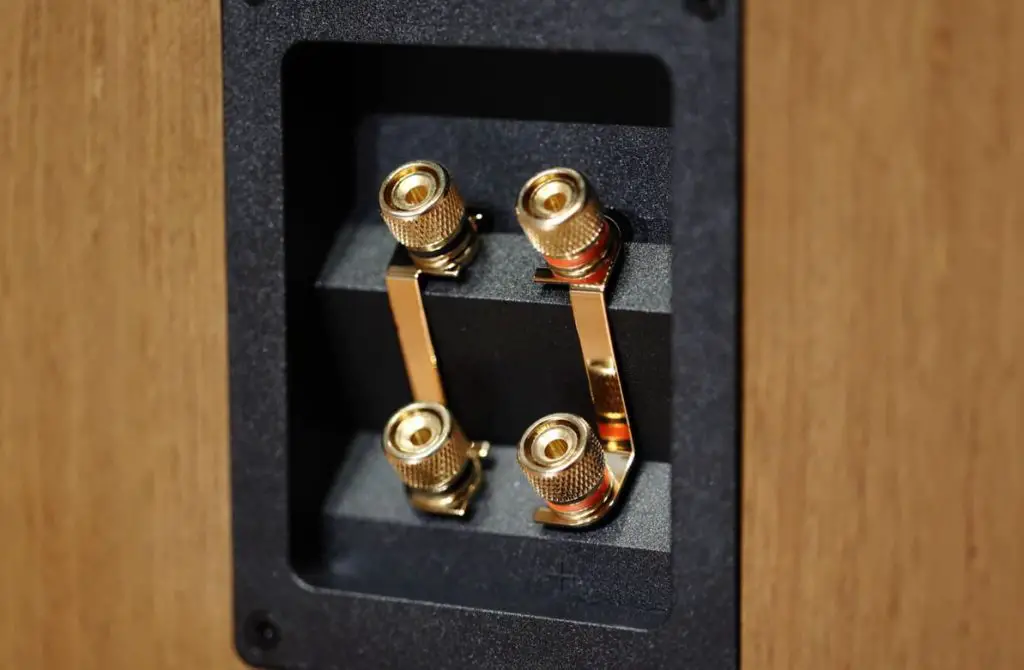
At high volumes, the sound was not strained or tense, but rather elegant and detailed. This was a surprise to me. However, I strongly recommend trying different amplifier options with the JBL 4309 Bookshelf Studio Monitor, as it has the potential to further improve the sound. In my opinion, it is a speaker worth investing in, as it can perform well with both inexpensive and high-quality amplifier equipment.
When I listened to Dominique Fils-Aimé’s “Nameless” the vocals had a thick, full sound, and the soundstage was also very beautiful, with the tone being influenced by the paired amplifier. However, the overall sound was not overly biased, since this speaker is designed based on a monitoring speaker.
I tried pairing it with two amplifiers with different price points and designs, and the differences were clearly evident, but the directness of the sound energy was the same. Additionally, the sense of space, especially the front-to-back depth, was very noticeable and was more prominent than the left-to-right width.
If the music being played had a clear front-to-back arrangement, this speaker would perform very well. Also, the energy and density of the speaker are really good, so I can comfortably spread the left and right channels out and still get a very good overall density, which is a very rare advantage.
Listening to Yosi Horikawa’s “Wandering” again challenged the sound system’s resolution, sound height, positioning level, and low-frequency speed and volume sense. In terms of sound realism, the JBL 4309 does indeed have the characteristics of a monitoring speaker.
The sound of leaves stomping and birds chirping sounds very realistic, and the JBL 4309’s extension in the midrange and high-frequency ranges is also clearly felt from the birds chirping. The smoothness and sharpness of the extension upwards are very pleasant to listen to, and many higher-grade speakers may not necessarily have such a beautiful treble.
Next, let’s turn to the performance of low-frequency speed and energy. First of all, in terms of energy sense, the JBL 4309 Bookshelf Studio Monitor is sufficient. Our listening space compared to the speaker is quite large, but there is no feeling of poverty. Importantly, the positioning sense is great, not only in the low frequency but also in the midrange and high frequency.
And this song has some extremely low-frequency performance, of course, the size of the JBL 4309 studio monitor is really not easy to do, there are indeed physical limitations, but in most music, it is completely unscathed, I think this pair of speakers can be absolutely collected, with both feelings and good sound, and matching and placement are very flexible.
Listening to Sam Smith’s “To Die For”, the first thing that stood out was the cohesion of the sound, which was quite sufficient. The sound image is not spread out in front of you as a whole but is clearly collected at one point, from which it then radiates outwards. Next, I noticed that the JBL 4309 has good performance in both the highs and lows.
In terms of the highs, at the beginning of the song, the breath sounds, although the sound is softer and weightless, do not feel like they are floating around like clouds, but rather feel very solid and present in front of you. After the breath sounds, the song moves to a more powerful male high-pitched section, and the sound feels very smooth and comfortable to listen to.
The lows, on the other hand, feel very flavorful and as if you can feel the richness of the colors. In terms of the sound of the piano, the lows are very thick and resonating in the background, while the high-pitched strings are soft and dense, intertwining with each other. You can feel the JBL 4309 fully bringing out the atmosphere of this song and after listening, you feel as if you have been covered with a thick layer of emotional filters.
Conclusion
If you’re in the market for a high-quality speaker, you can’t go wrong with the JBL 4309 desktop speaker As a leading brand in the world of loudspeaker development, JBL has built a reputation for producing top-notch products that deliver excellent sound quality.
The 4309 is no exception. With its characteristic compressed horn tweeters and 6.5-inch mid-bass driver, this bookshelf speaker delivers rich, full-bodied sound that will elevate your listening experience. In addition to its impressive audio capabilities, the JBL 4309 desktop speaker is also visually appealing, with a sleek and stylish design that’s sure to complement any home audio setup.
Whether you’re an audiophile or just looking to upgrade your home theater system, the JBL 4309 is a top-quality choice that you won’t be disappointed with.
